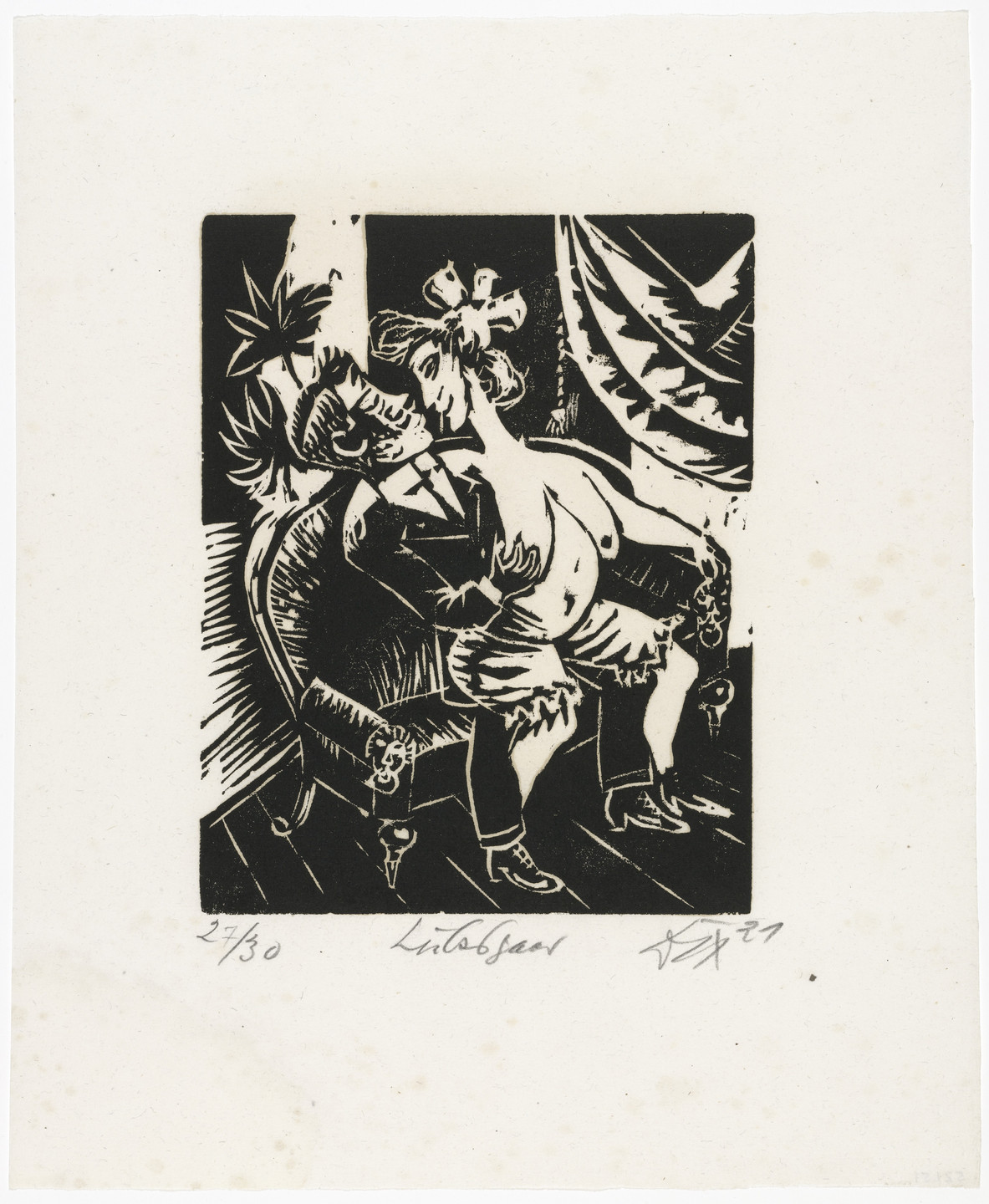Otto Dix aggressively implies in this portfolio that sex is the force driving all men. In Apotheose (Apotheosis), fragmented body parts and leering faces orbit a grotesquely distorted prostitute, whose outsize genitalia mark the center of the composition. Dix believed in the utter incompatibility of men and women. He borrowed imagery conveying the epic conflict of the sexes from philosopher Friedrich Nietzsche's Thus Spoke Zarathustra, such as the juxtaposed moon and sun in Mann und Weib (Nächtliche Szene) (Man and woman [nocturnal scene]) and the cats slinking over moonlit roofs in Katzen (Cats). On the streets, meanwhile, traditional order—both moral and pictorial—breaks down. Die Prominenten (Konstellation) (The celebrities [constellation]) reveals Dix's skepticism toward exuberant promises of a better future: four ideologues share a single body, espousing a manifesto of love, fatherland, order, and Dada.
Although still indebted stylistically to the Expressionist techniques of distortion, the Futurist fracturing of picture planes, and the Cubist use of collage, Dix has already discovered the power of scathing social critique in these early woodcuts, which count as some of his first prints. He made woodcuts only briefly, between 1919 and 1920, and then gave up the medium entirely.
Publication excerpt from Heather Hess, German Expressionist Digital Archive Project, German Expressionism: Works from the Collection. 2011.
